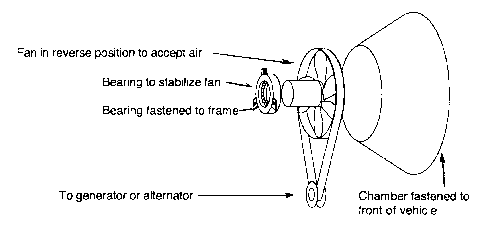Some of the information on this Web page has been provided by external sources. The Government of Canada is not responsible for the accuracy, reliability or currency of the information supplied by external sources. Users wishing to rely upon this information should consult directly with the source of the information. Content provided by external sources is not subject to official languages, privacy and accessibility requirements.
Any discrepancies in the text and image of the Claims and Abstract are due to differing posting times. Text of the Claims and Abstract are posted:
| (12) Patent Application: | (11) CA 2326350 |
|---|---|
| (54) English Title: | HARNESSING POWER (ELECT) FROM MOTION TO SUPPLY OR MAINTAIN THE ELECTRIC VEHICLE EXTENDING IT'S RANGE |
| (54) French Title: | CAPTEUR DE POUVOIR (ELECTRIQUE) PAR LE MOUVEMENT POUR FOURNIR OU MAINTENIR POUR AUGMENTER LA PORTEE D'UN VEHICULE ELECTRIQUE |
| Status: | Deemed Abandoned and Beyond the Period of Reinstatement - Pending Response to Notice of Disregarded Communication |
| (51) International Patent Classification (IPC): |
|
|---|---|
| (72) Inventors : |
|
| (73) Owners : |
|
| (71) Applicants : |
|
| (74) Agent: | |
| (74) Associate agent: | |
| (45) Issued: | |
| (22) Filed Date: | 2000-11-20 |
| (41) Open to Public Inspection: | 2002-04-08 |
| Examination requested: | 2000-11-20 |
| Availability of licence: | N/A |
| Dedicated to the Public: | N/A |
| (25) Language of filing: | English |
| Patent Cooperation Treaty (PCT): | No |
|---|
| (30) Application Priority Data: | None |
|---|
1. To harness motion it is known to have an opening in front of a vehicle. To
allow
the air pressure caused by forward motion into the chamber, forced upon the
fan or
propeller type object to create the rotation to create the RPMs = Electricity
by generator
or alternator which is fed through a regulator to the batteries and electric
motor. This
will extend the range of the electric vehicle. A second set of batteries will
be placed in
a suitable place on the vehicle to be charged while the 'primary' is used. The
primary
batteries are used to put vehicle in its primary motion.
2. In Aviation, principle is the same as in Part 1 (above).
Note: Claims are shown in the official language in which they were submitted.
Note: Descriptions are shown in the official language in which they were submitted.

2024-08-01:As part of the Next Generation Patents (NGP) transition, the Canadian Patents Database (CPD) now contains a more detailed Event History, which replicates the Event Log of our new back-office solution.
Please note that "Inactive:" events refers to events no longer in use in our new back-office solution.
For a clearer understanding of the status of the application/patent presented on this page, the site Disclaimer , as well as the definitions for Patent , Event History , Maintenance Fee and Payment History should be consulted.
| Description | Date |
|---|---|
| Inactive: IPC deactivated | 2016-01-16 |
| Inactive: IPC assigned | 2016-01-01 |
| Inactive: IPC expired | 2016-01-01 |
| Inactive: IPC from MCD | 2006-03-12 |
| Application Not Reinstated by Deadline | 2003-09-19 |
| Inactive: Dead - No reply to s.30(2) Rules requisition | 2003-09-19 |
| Inactive: Adhoc Request Documented | 2003-08-22 |
| Deemed Abandoned - Failure to Respond to Maintenance Fee Notice | 2002-11-20 |
| Inactive: Abandoned - No reply to s.30(2) Rules requisition | 2002-09-19 |
| Application Published (Open to Public Inspection) | 2002-04-08 |
| Inactive: Cover page published | 2002-04-07 |
| Inactive: S.30(2) Rules - Examiner requisition | 2002-03-19 |
| Advanced Examination Determined Compliant - paragraph 84(1)(a) of the Patent Rules | 2002-02-08 |
| Letter sent | 2002-02-08 |
| Inactive: Advanced examination (SO) fee processed | 2002-02-05 |
| Early Laid Open Requested | 2002-02-05 |
| Inactive: Advanced examination (SO) | 2002-02-05 |
| Inactive: Correspondence - Formalities | 2001-09-04 |
| Inactive: First IPC assigned | 2001-01-19 |
| Inactive: Filing certificate - RFE (English) | 2001-01-08 |
| Filing Requirements Determined Compliant | 2001-01-08 |
| Application Received - Regular National | 2001-01-04 |
| Request for Examination Requirements Determined Compliant | 2000-11-20 |
| All Requirements for Examination Determined Compliant | 2000-11-20 |
| Abandonment Date | Reason | Reinstatement Date |
|---|---|---|
| 2002-11-20 |
| Fee Type | Anniversary Year | Due Date | Paid Date |
|---|---|---|---|
| Application fee - small | 2000-11-20 | ||
| Request for examination - small | 2000-11-20 | ||
| Advanced Examination | 2002-02-05 |
Note: Records showing the ownership history in alphabetical order.
| Current Owners on Record |
|---|
| JOHN HERBERT CHEESEMAN |
| Past Owners on Record |
|---|
| None |